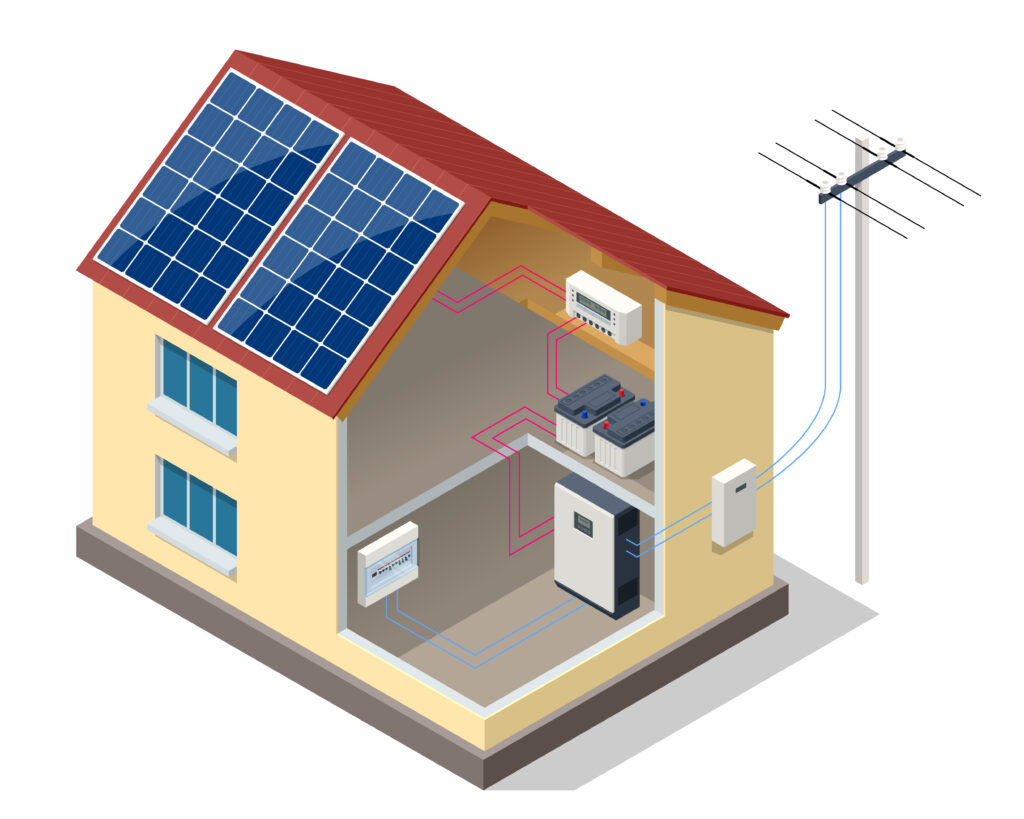They have two south-facing solar power systems to power everything they need. The first solar system is just one solar panel that generates enough power for their lights, cell phones, and music player.
The larger system powers their full-sized fridge, a deep freezer, washing machine, as well as a mixer, blender, and a toaster. They have a backup generator but they only have to use it for about 40 hours per year during prolonged cloudy periods.
All five girls are homeschooled with the intent to enable all university/college requirements, which includes 10 collective hours daily use of electronics and internet. Five laptops and seven phones use quite a bit of energy, but their solar set up makes it no problem to do so.
Living a comfy and exciting solar powered life is entirely possible in BC. And you don’t have to opt for an off-grid lifestyle to do so.
Solar Strength
1
2
3
4

Solar panels are made out of photovoltaic cells and layers of silicon. Each layer has different electric properties that energize when hit by sunlight. This is called the photoelectric effect – and creates the current needed to produce electricity.
Solar panels are also very safe. There’s no danger of the photovoltaic cells leaking or emitting any toxins or fumes.
The inverter's role is to convert the direct-current (DC) electricity from the solar panel to an alternating current (AC), which can then be used to power your home!
The electrical panel has two functions: it receives electricity and carries power to various outlets and fixtures within your home; and it prevents fire-causing overloads.
In addition to powering your house, excess electricity generated from solar panels (especially during summer) can be fed back to the power grid.
Currently, BC is ranked #8 as the most ideal place to live on solar energy, with between 280-310 sunny days per year on average. This can keep a solar system charged for a majority (8 months) of the year with supplementary power sources like generators helpful in a pinch. The average Canadian household uses approx. 38kWh/day
, which averages about 28 days of power on a single charge.
You could easily have a Netflix binge weekend while baking croissants and grabbing an ice cold beverage from your fridge in a home completely powered by solar energy.
With an abundance of sunlight in the Pacific Northwest, this lifestyle would end up saving you thousands of dollars yearly and advance the Earth’s need for clean, renewable energy to slow the effects of climate change.
So, will you take advantage of our “sunshine coast” and illuminate the possibilities for a renewable energy future?
Curious for more science behind the energy of climate change?
Explore solutions for regenerating our planet on Change Reaction.


